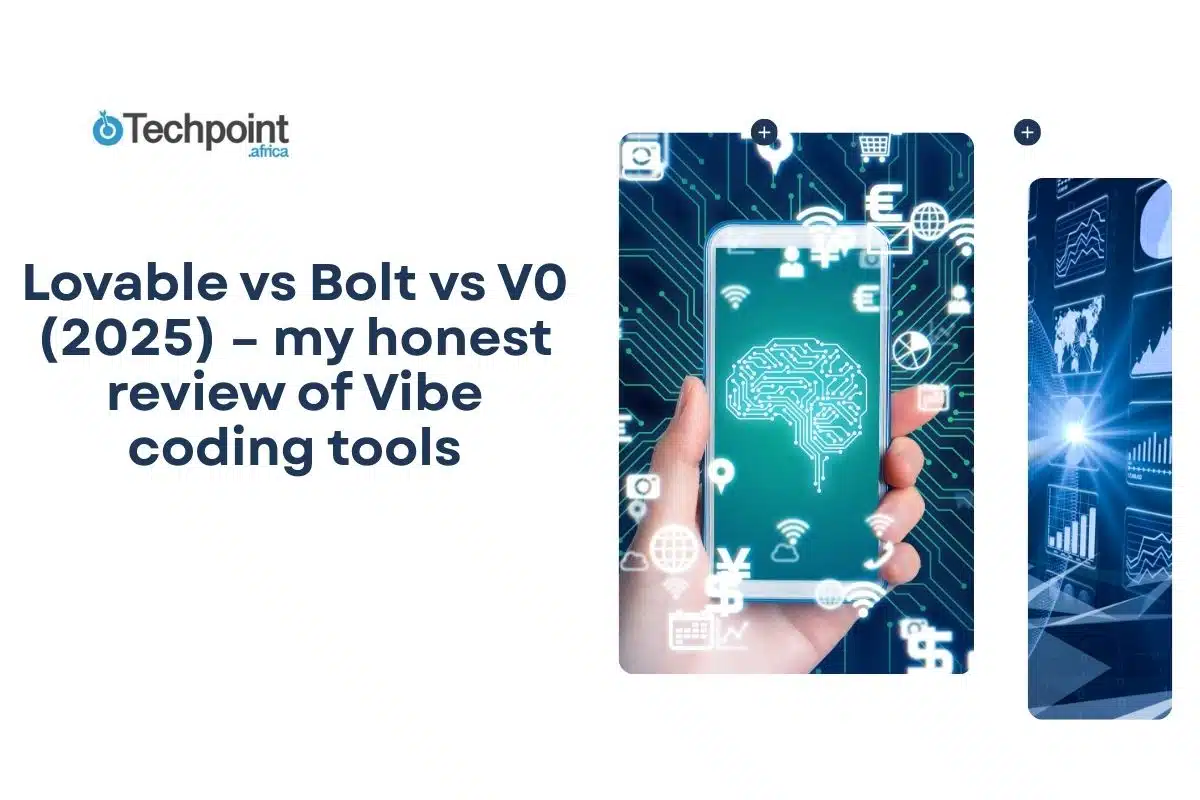Key takeaways:
- Not all AI-assisted programming qualifies as vibe coding. Tools like Lovable, Bolt, and v0 can build functional apps from prompts, not just fix code.
- None of the tools require downloads, and onboarding is quick and easy. They all offer chat-based prompting, support file uploads, and Figma integration.
- Bolt delivered the most visually creative apps. However, all three tools generated simple, functional, and deploy-ready apps.
- None of the tools perfectly cloned the UI from a screenshot. Each came close when replicating Lovable’s homepage but struggled with layout alignment, logo accuracy, and consistent styling.
- While how well each tool handles a task matters, you should also consider how easy it is to publish and manage your apps.
Did you know that not all AI-assisted programming counts as vibe coding?
I didn’t know either, until I tested Lovable, Bolt, and v0 for vibe coding. I’ve used tools like ChatGPT and DeepSeek to get help with code, but most of the time, they just give you suggestions or snippets that still need reviewing, tweaking, and testing. Sometimes, they even throw errors when you try to implement.
Sure, you can prompt these tools using natural language, and that’s helpful. But AIs for vibe coding go a step further; you simply describe what you want, and they build a working solution, not just quick fixes or lines of code.
That’s one of the reasons vibe coding is getting so much attention, creating a different way to build. These tools often come with different modes like chat, build, or edit, giving you flexibility in how you want to work.
Still, not all vibe coding tools handle tasks the same way. That’s why it’s worth comparing them side by side. Does one clearly perform better? Are the results similar but delivered in different styles? Or is one of them unable to handle certain tasks at all?
In this article, I’ll walk you through how Lovable, Bolt, and v0 perform in real-world scenarios. You’ll see what each tool can do, how they compare, which one offers the best experience, and what to consider when picking the right vibe coding tool for your workflow.
Vibe coding and how you can use it
What started as a simple tweet from Andrej Karpathy in early 2025 has now become something that developers, founders, code hobbyists, and even people like me, without a coding background, are excited to explore.
Vibe coding involves prompting AI in natural language to get a task done or build a solution, without manually writing any code. It typically generates both the code and the user interface for your project.
While ChatGPT and tools like DeepSeek can help with coding, they don’t build complete, working products or offer integrations like Supabase, Figma, and GitHub. These are features you’d find in vibe coding tools. So, even though those tools provide AI-assisted programming, they aren’t the same as vibe coding tools.
There are direct approaches to vibe coding. The three common ones include:
Fully non-technical
If you don’t have any coding experience, you can simply describe your app idea, especially if it’s a simple one, and the AI will build everything for you.
Hybrid
You let the AI write most of the code, then make small edits yourself. It’s a great option if you are already an expert developer or want to understand how things work without starting from scratch.
Learning pathway
You can also use vibe coding to slowly build your technical skills. Many non-coders discover how apps are built by working with AI tools and develop a clear understanding before manually building a full product.
In all, the best way to use vibe coding tools depends on your goal. But whichever path you take, vibe coding offers several benefits. For both developers and non-developers, vibe coding:
- Reduces coding friction and speeds up the process
- Makes fixing bugs less stressful
- Shifts the focus to creativity instead of complexity
- Prevents burnout and makes coding less overwhelming for beginners
- Helps test ideas and concepts
- Lowers the entry barrier and supports self-paced learning
- Requires no complicated setup
Lovable vs Bolt vs v0 for vibe coding
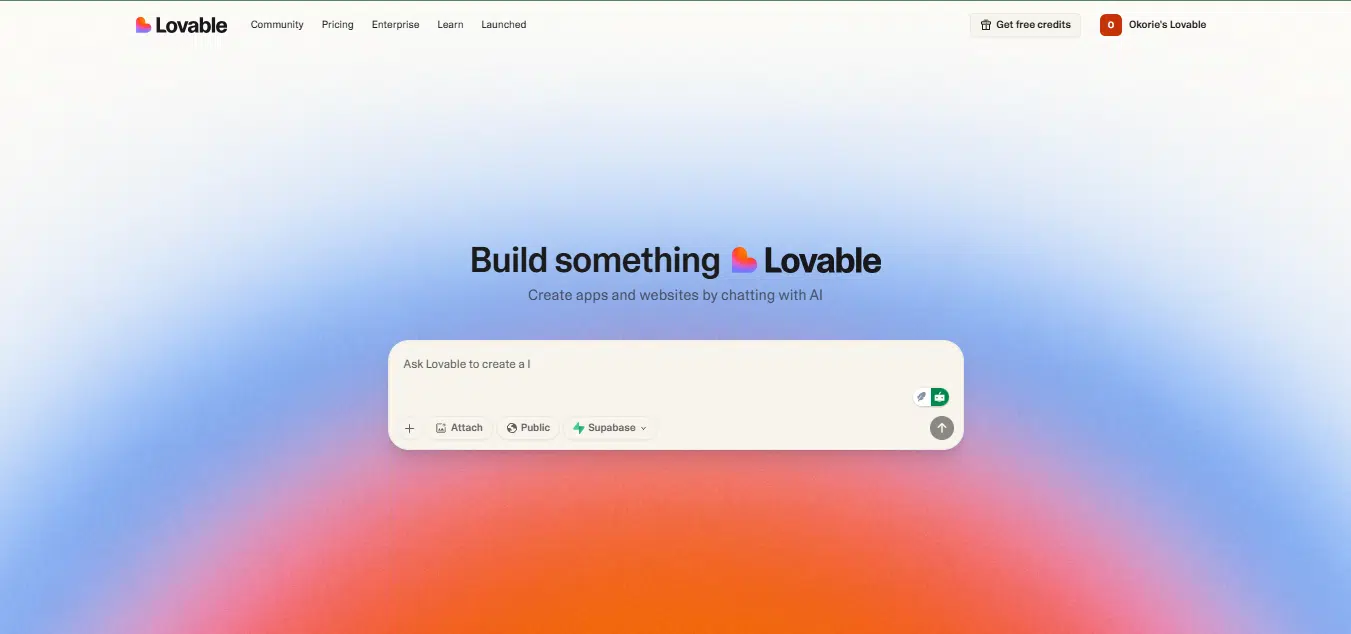
Lovable is a vibe coding tool that lets you build apps and websites by prompting the AI in natural language through the chat field, uploading images, or importing designs from Figma. You can edit, export, and deploy your project using its built-in features.
It also includes a multiplayer feature for team collaboration, along with integrations like GitHub and pre-built templates to help you get started quickly.
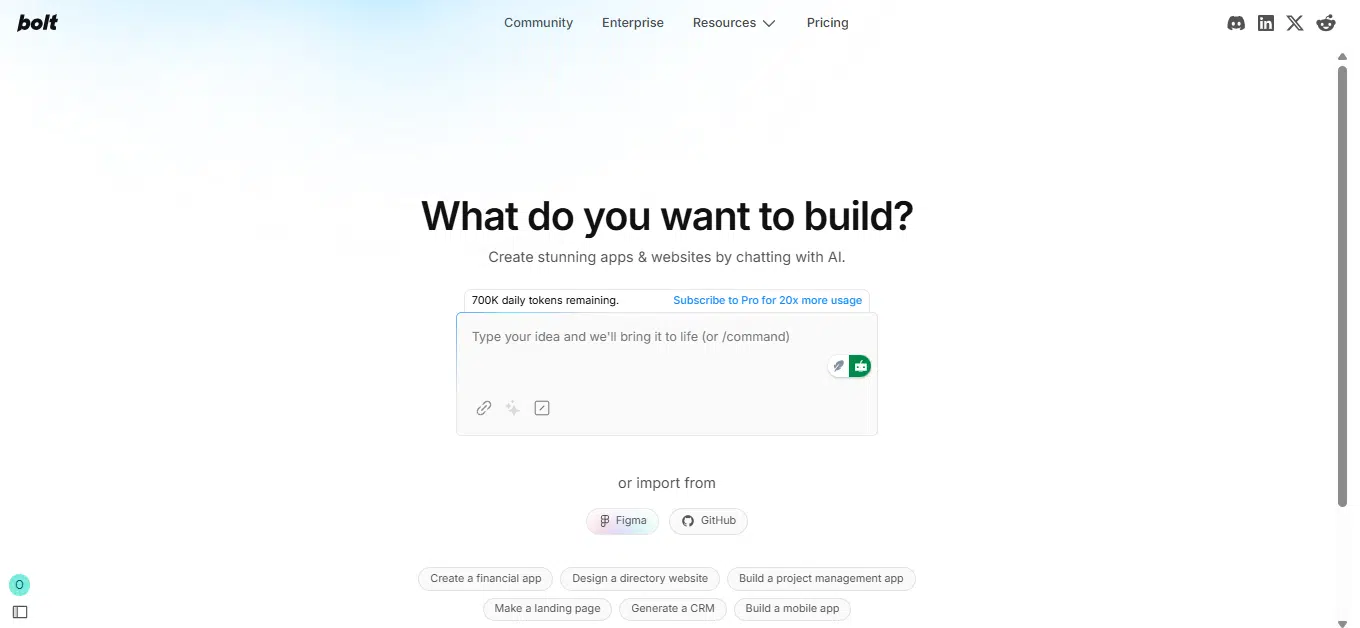
Bolt is an AI-powered application development tool with a chat-based interface where you can prompt the AI to build and modify code. With Bolt, you can create websites and web applications. It supports JavaScript frameworks and integrates with tools like Figma, Netlify, GitHub, and Expo.
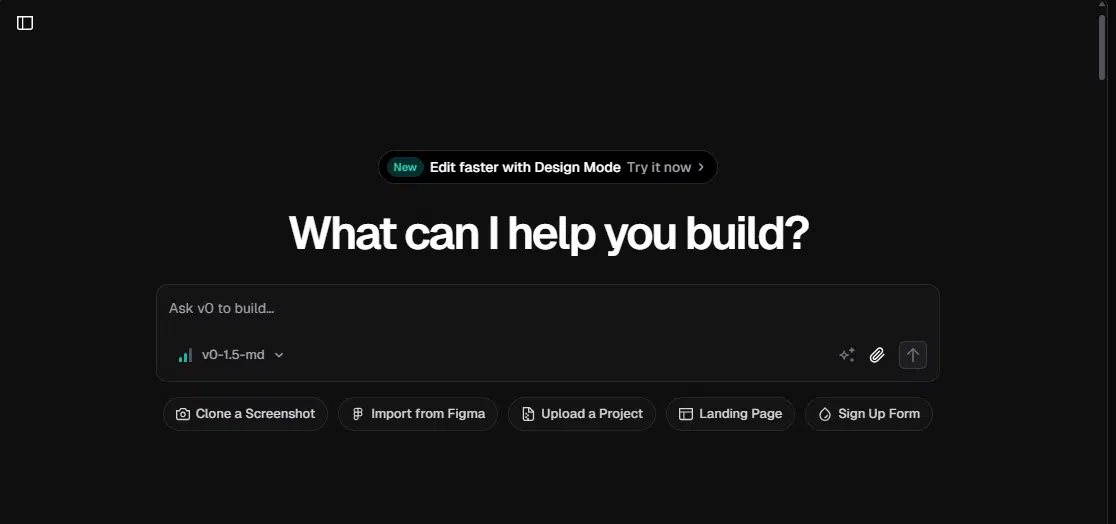
v0 is a pair-programmer tool with a generative chat interface that provides technical guidance and helps you build for the web. It can generate functional UI and write and execute code in JavaScript and Python.
The chat interface lets you interact with the v0 AI assistant and preview results directly in the chat. You can upload screenshots, mockups, or Figma designs. You can also export the generated output into your existing codebase or click publish to deploy it.
Lovable vs Bolt vs v0 at a glance
| About | Lovable | Bolt | v0 |
| Developer | Lovable is an European company based in Stockholm | Bolt was developed by StackBlitz | v0 was developed by Vercel |
| Year launched | Lovable 1.0 was launched in late 2024 | Bolt was founded in 2024 | Vercel founded v0 in 2023 |
| Type of AI tool | It is an AI-powered web application development platform | It is an in-browser AI web development agent | It is an AI-powered pair-programmer for web apps development |
| Top use cases | Landing pages and websitesSaaS applicationsAuthentication Systems | Mobile applicationsFull-Stack web applicationsData-driven Applications | Landing pages and websitesDashboards and data visualizationMobile-responsive apps |
| Availability | Lovable doesn’t have separate mobile or desktop versions. It is a web-based platform | Bolt doesn’t have dedicated mobile or desktop applications. It runs entirely in your browser | v0 is web-based and doesn’t have mobile or desktop versions yet |
| Who is it for? | Technical and non-technical users, learners and educators, developers, and founders | Technical users, learners, non-technical and code enthusiasts, teams, and companies | Product managers, designers, engineers, data scientists, marketing teams, content creators, educators, customer support, and founders |
| Pricing | Free plan at $0/month. Paid plans start at $25/month for Pro and $30/month for Teams | Uses token-based pricing. Free plan with limited tokens. The paid plan starts at $20/month for more tokens | Uses a credits and token model. Free plan at $0/month, Premium at $20/month, Team at $30/user/month, and Enterprise with custom pricing |
| Best for? | Beginner and intermediate users | Newbies and intermediate users | Intermediate and experts users |
Lovable vs Bolt vs v0 setup and first impressions
Lovable setup
The get started button takes you to the onboarding page to sign up on the platform. After that, it redirects you to the homepage, where you’ll see a chat area for entering prompts.
You can attach files and import designs directly from Figma. I also noticed a feature that lets you set your project visibility, allowing you to make it public or keep it private within your workspace. Lovable’s homepage features templates from community projects, which you can preview or remix.
The user interface feels simple and easy to navigate.
Bolt setup
There’s a chat field where you enter prompts to get started, and you can also enhance your prompts. You can upload files or import from Figma and GitHub. Bolt also includes some ready-made prompts.
After signing up and completing onboarding, it brings you back to the homepage with the chat interface. From the settings page, you could connect tools like Netlify, Supabase, Figma, and GitHub.
The interface wasn’t overwhelming. It was easy to use, and the setup was beginner-friendly.
v0 setup
Just like Lovable and Bolt, v0’s homepage includes a prompt input field to get started. I had to sign up to complete onboarding, but the process was quick. After signing up, I was redirected to the prompt input page, where I could begin or browse community projects.
v0 also included project management tools that would allow me to view the projects I’ve created and see recent projects and chats. The setup wasn’t difficult, and the interface didn’t feel overwhelming.
Overall, setting up on all three platforms was easy, and none of them required downloads before getting started.
How I tested the vibe coding for my honest review
Lovable, Bolt, and v0 let you handle various app development and coding tasks, including creating applications, landing pages, and dashboards using AI prompts.
I tested each platform based on its ability to generate full-stack apps across multiple use cases using prompts written in natural language. I gave the same prompts to each tool and observed how they handled the tasks, what they had in common, their strengths, and their weaknesses.
Although all three platforms offer paid plans, I tested them using the free plan, exploring how much you can do with their free plans.
The use cases I tested included:
- Pomodoro app for time management and productivity
- Personal budget tracker
- Dashboard (for analytics or admin tasks)
- E-commerce website
- Clone a screenshot
Testing Lovable vs Bolt vs v0 with 5 Prompts for my honest review
Prompt 1
I want to build a simple Pomodoro app that helps users stay focused by offering different work session options ranging from 25 minutes to 3 hours, with break times between 5 and 15 minutes. The app should let users choose their preferred session and break durations, display a timer when it starts, and include start/stop buttons. It should also play a sound when a session is completed and automatically switch between work and break modes.
Lovable’s response
Lovable’s Pomodoro app included a timer, reset and play/pause buttons, and settings for work and break durations. It also displays how many sessions were completed, sends a notification when a work session is completed, and displays a break timer. The features matched what the prompt asked for. Pomodoro apps are generally simple, and the one built by Lovable wasn’t cluttered. It was easy to navigate, and I found it functional during testing.
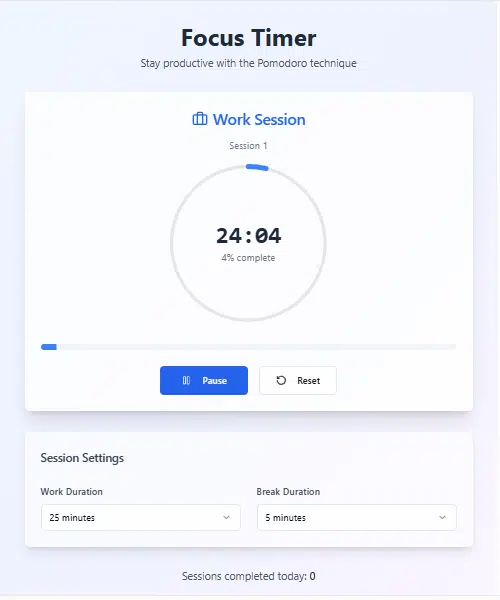
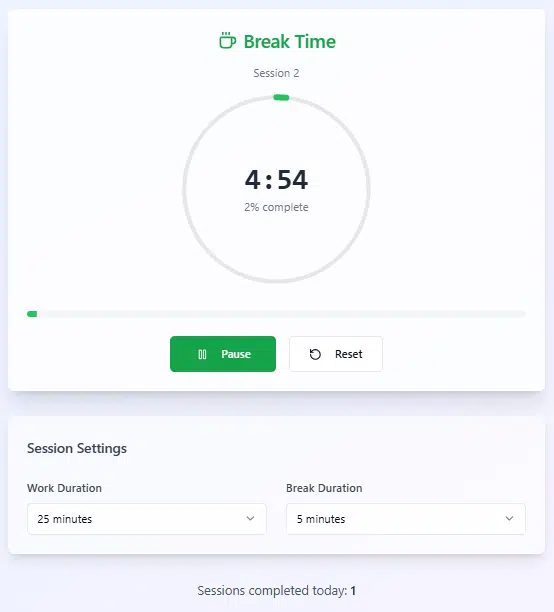
Bolt’s response
Bolt met the requirements of the prompt and included the necessary features. Its design leaned more toward a dark color palette instead of a light one. The buttons worked as expected. I set a 25-minute work time and break session, and the app completed the cycle correctly and moved to the break timer.
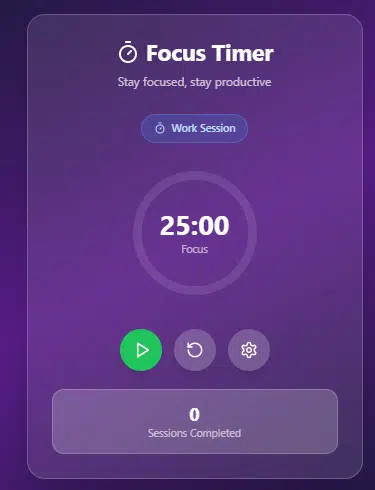
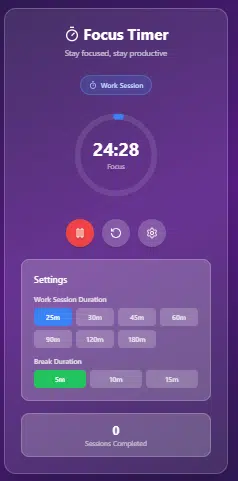
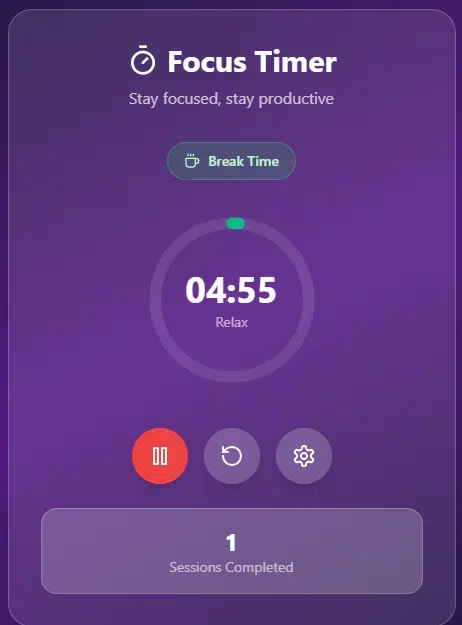
v0’s response
v0 didn’t include the session completion counter that the prompt requested. Still, the output was simple, though a bit too basic. I tested it and confirmed that the 25-minute work countdown worked properly. It played a notification sound at the end and started the break session.
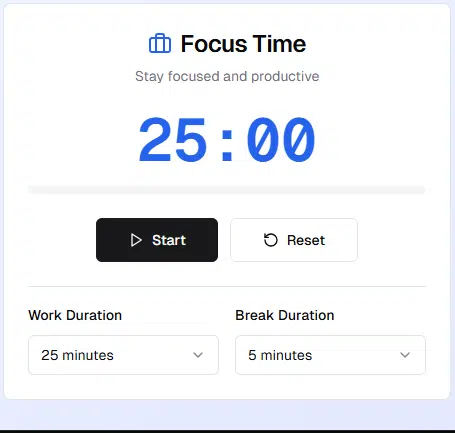
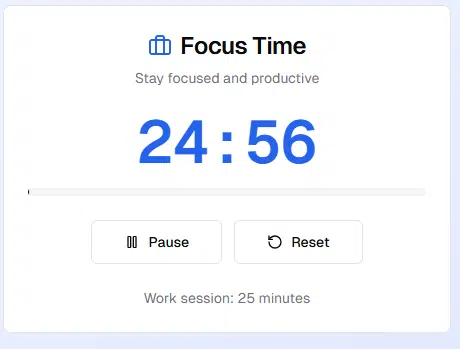
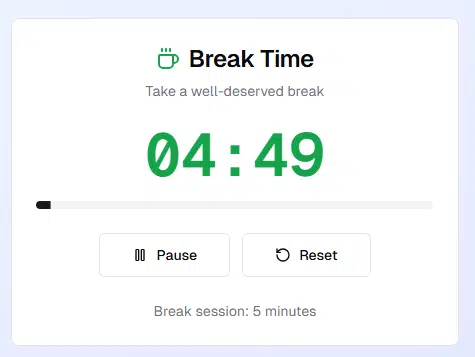
My take:
v0’s result was the most basic of the three, but it was functional. Bolt was more creative and visually appealing. Lovable gave a good response too, simple but effective. If you want a more creative pomodoro app, then Bolt could be the tool.
Prompt 2
Design and develop a personal budget tracker application that lets users add and categorize income and expenses such as food, rent, and shopping. Users should be able to view a monthly summary of their financial activity and visualize spending trends through simple charts and graphs. Include motivational quotes about money and saving to encourage users. They should also be able to invite a friend to view their report.
Lovable’s response
The budget tracker has up to five tabs: overview, add transactions, charts, motivation, and share. The transactions tab lets you add either income or expenses, along with the amount and category. Once added, transactions are reflected. The Motivation tab offers savings tips and financial goals. The share tab allows you to invite a friend via email to view a summary of your transactions.

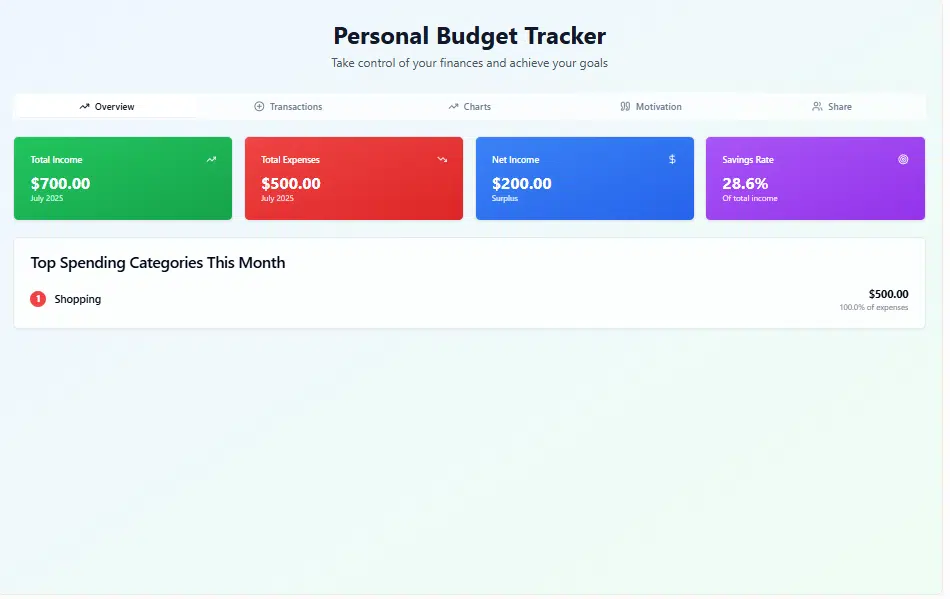
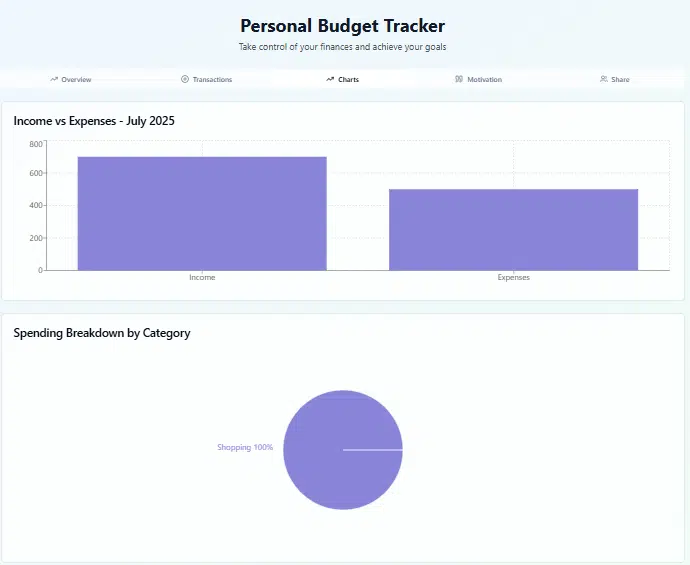
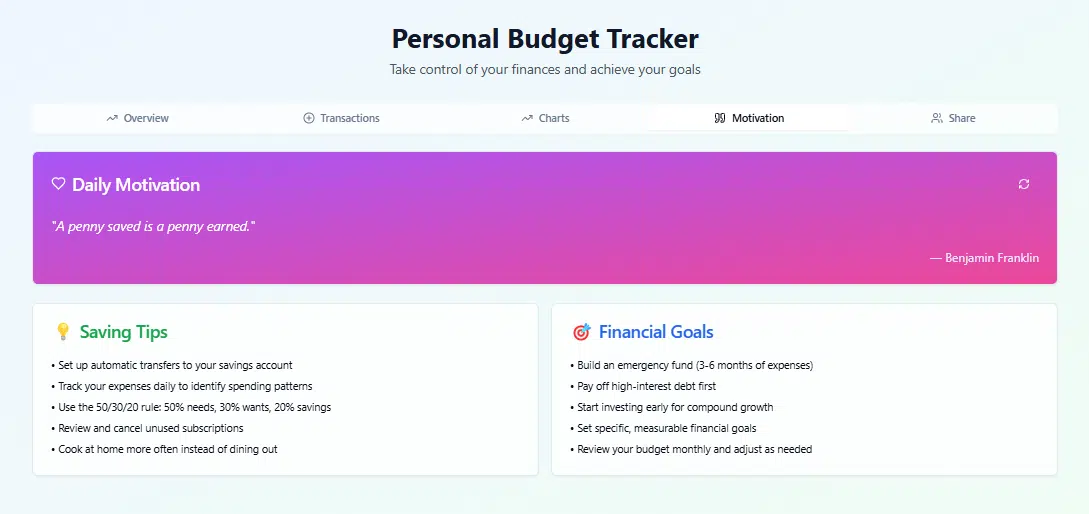
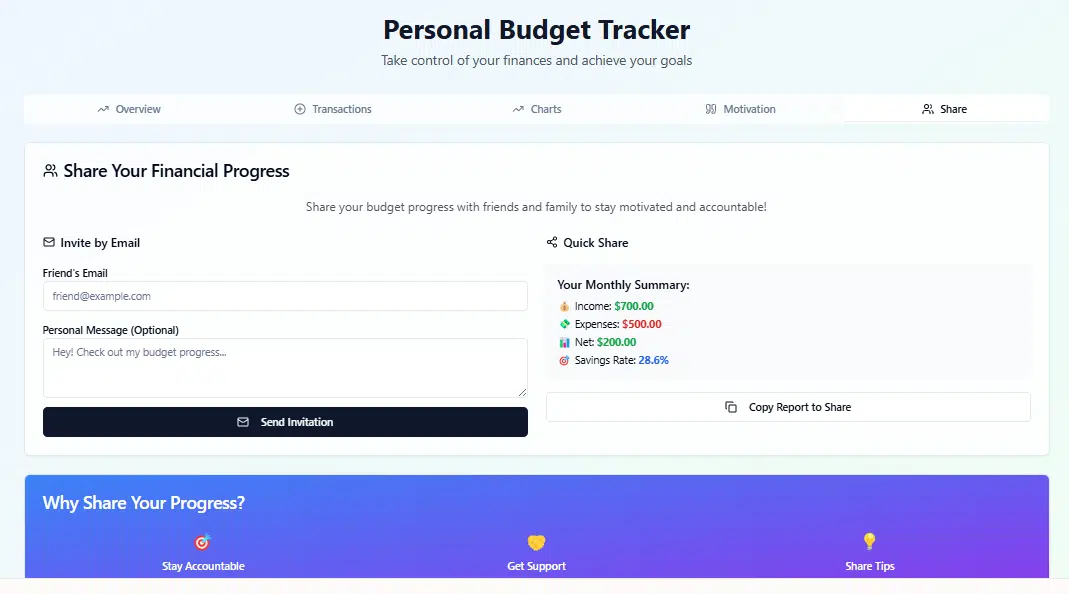
Bolt’s response
Bolt featured tabs for dashboard, add transaction, trends, report, and share. I tested the app by adding income and expenses, and the data updated across the tabs. However, the trends tab didn’t display data immediately, possibly because there weren’t enough transactions yet. The reports tab provided a full breakdown of all transactions. The design wasn’t cluttered; it was simple, appealing, and creative.
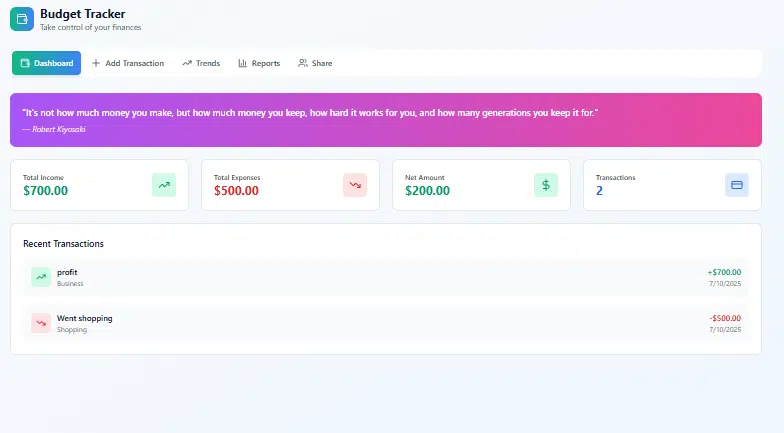
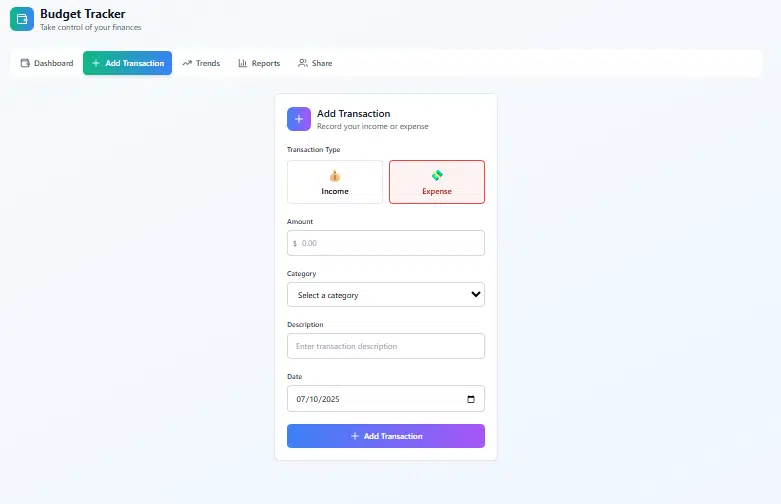
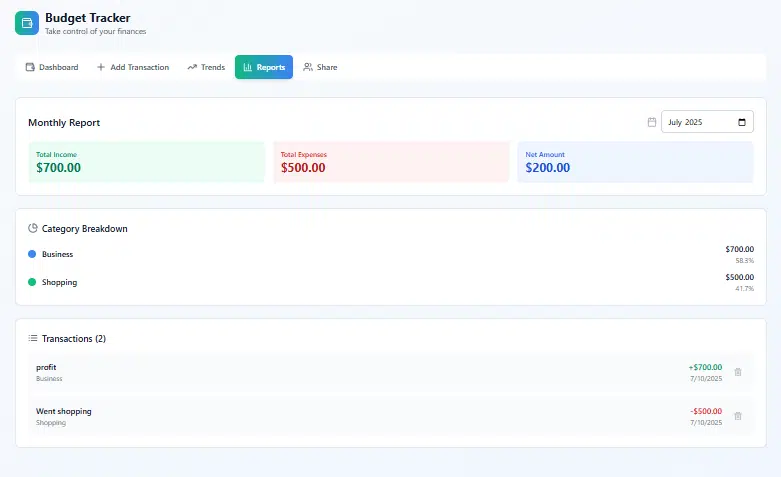
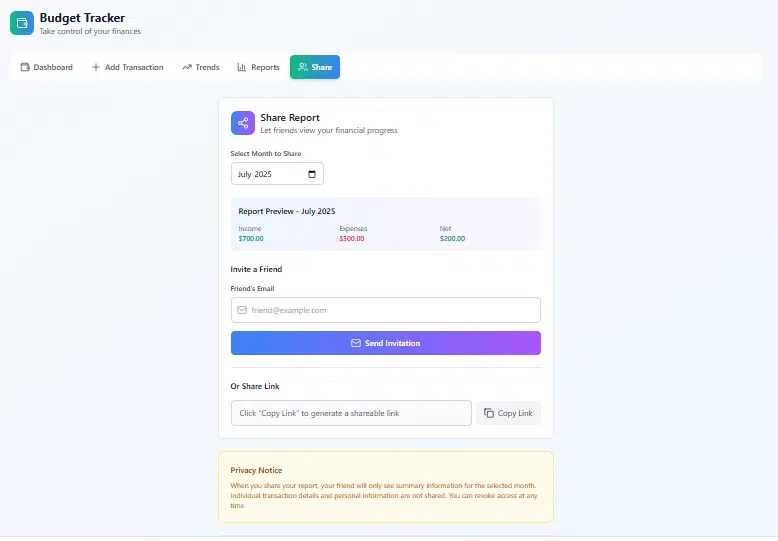
v0’s response
This tool has a transactions tab for adding income and expenses, which are reflected in the analytics and overview sections, showing total income, expenses, and balance. The daily motivation tab includes motivational content, savings advice, and goal-setting tips. To share your report, you can either copy a link to the app or send it through email.
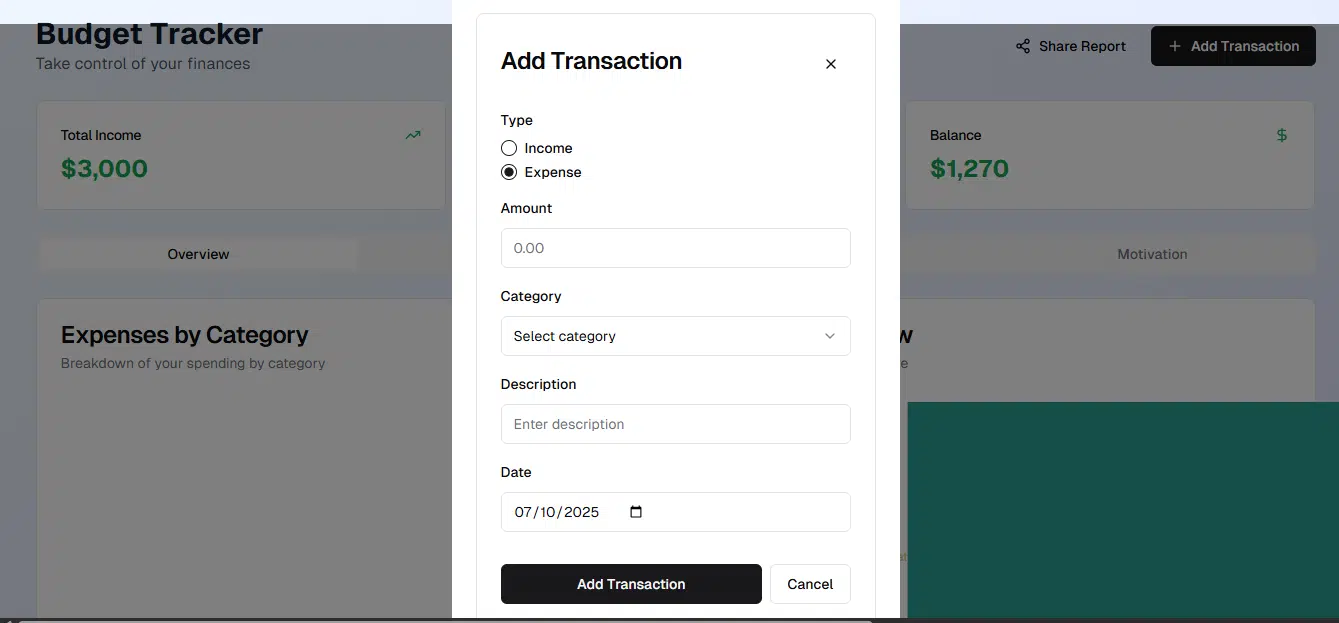
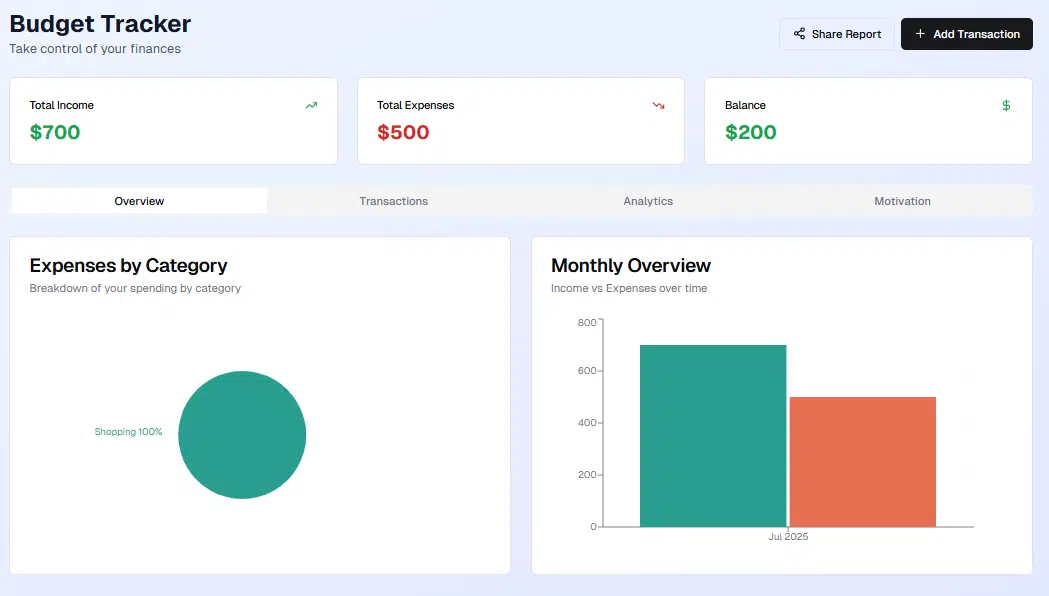
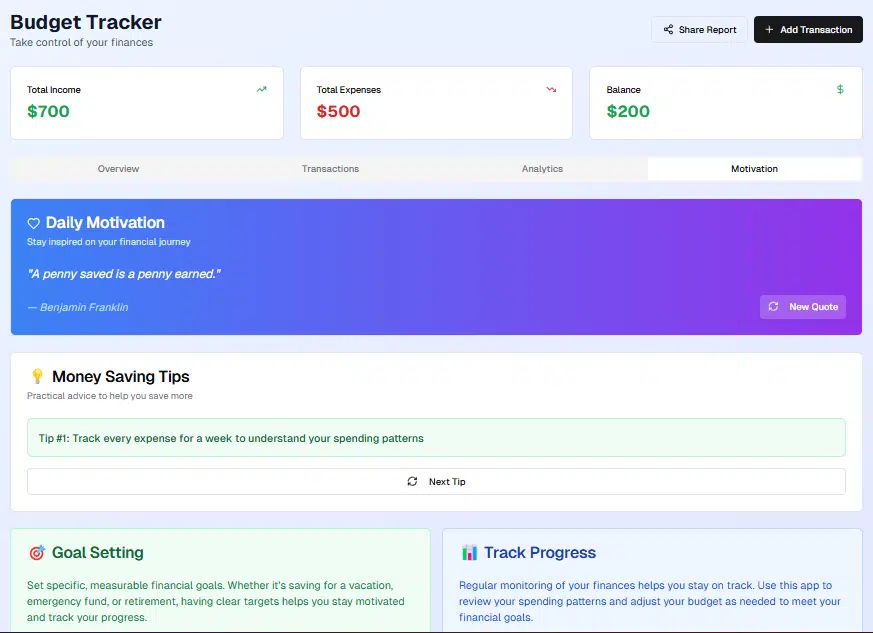

My take
Bolt had a better flow than both v0 and Lovable. However, all three tools had a very similar structure and layout. Any of them could work for building a budget tracker app.
Prompt 3
Make an admin dashboard for an agricultural brand that sells various types of fruit. The dashboard should display key metrics such as total sales, inventory levels, best-selling fruits, and pending orders. Include charts for monthly sales and seasonal trends. Add sections for managing fruit categories, adding new products, and tracking delivery status.
Lovable’s response
Lovable’s response for an admin dashboard satisfied the prompt. It was easy to navigate and included detailed tabs to display records and add new fruits. However, some of the buttons were not functional.
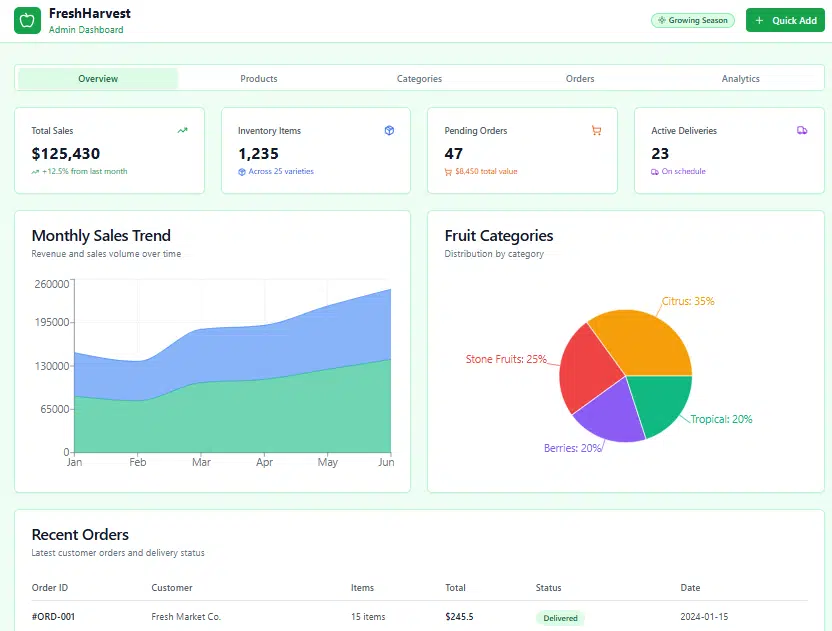



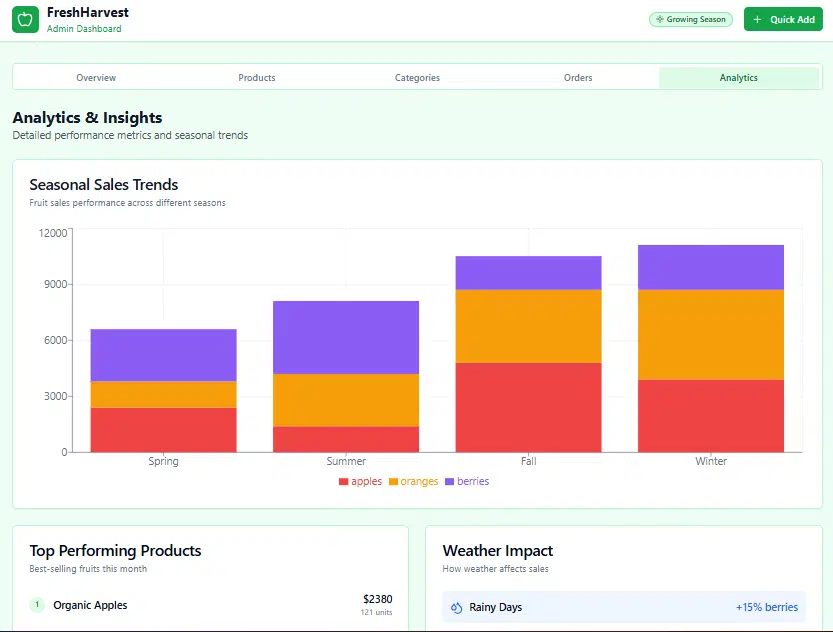
Bolt’s response
Bolt didn’t create many tabs for this solution but still met the requirements of the prompt. Its result was simple, with a button for adding new fruits. This button allowed users to add new produce, including category, quantity, and price. It used dummy data that could be deleted and replaced with new information.
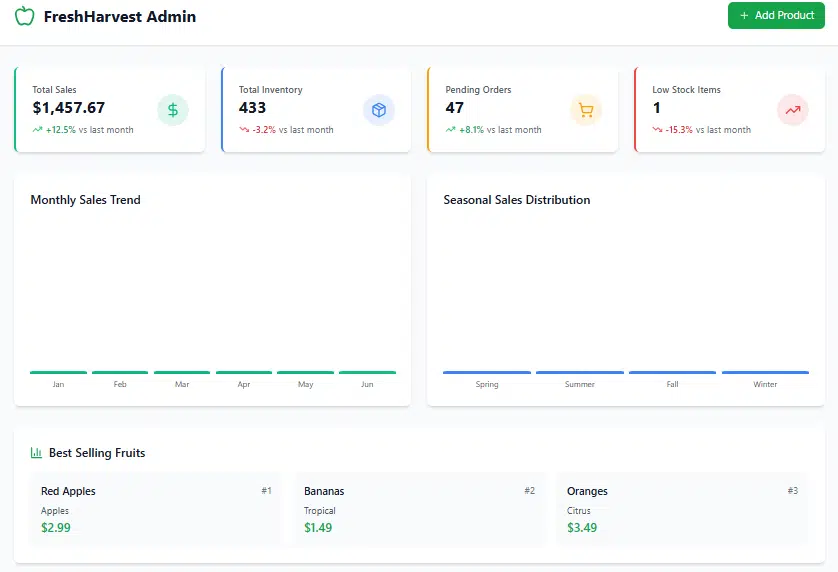
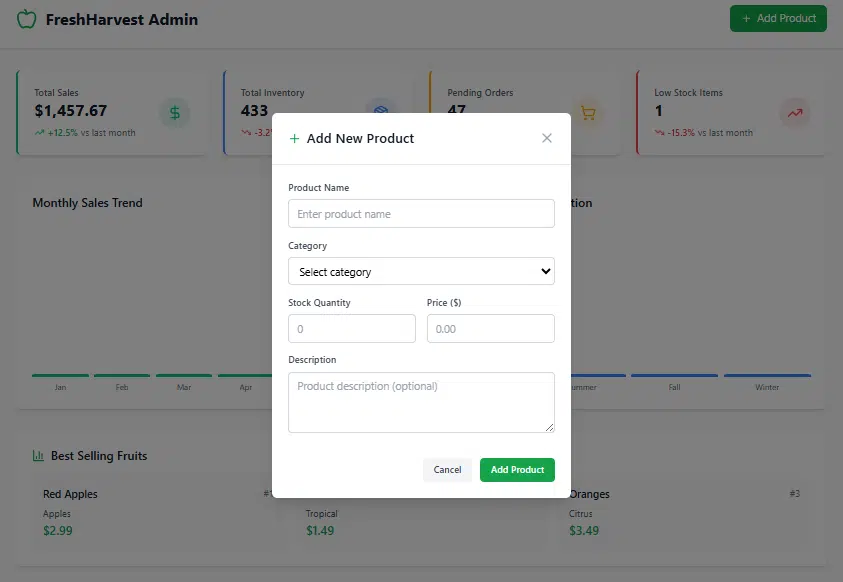
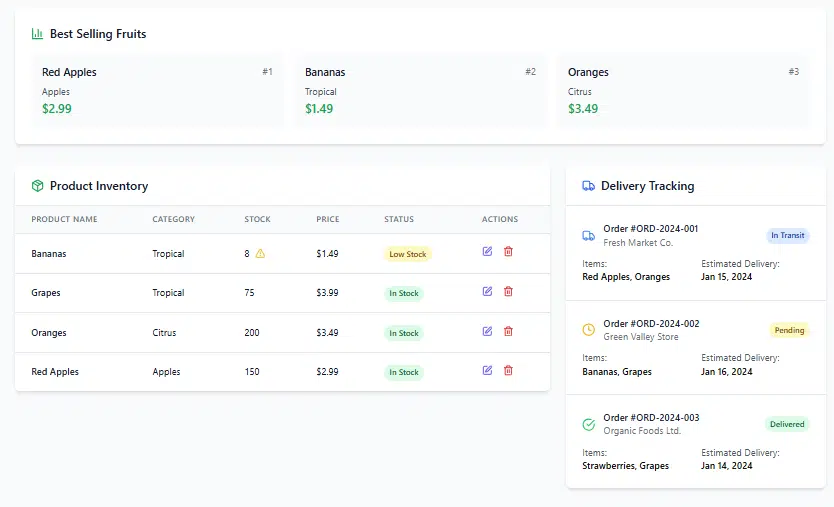
v0’s response
v0’s response had an organized layout with key navigation tabs arranged on the side. However, most of the screens were not built. The design didn’t fit properly either; it was cut off and misaligned.
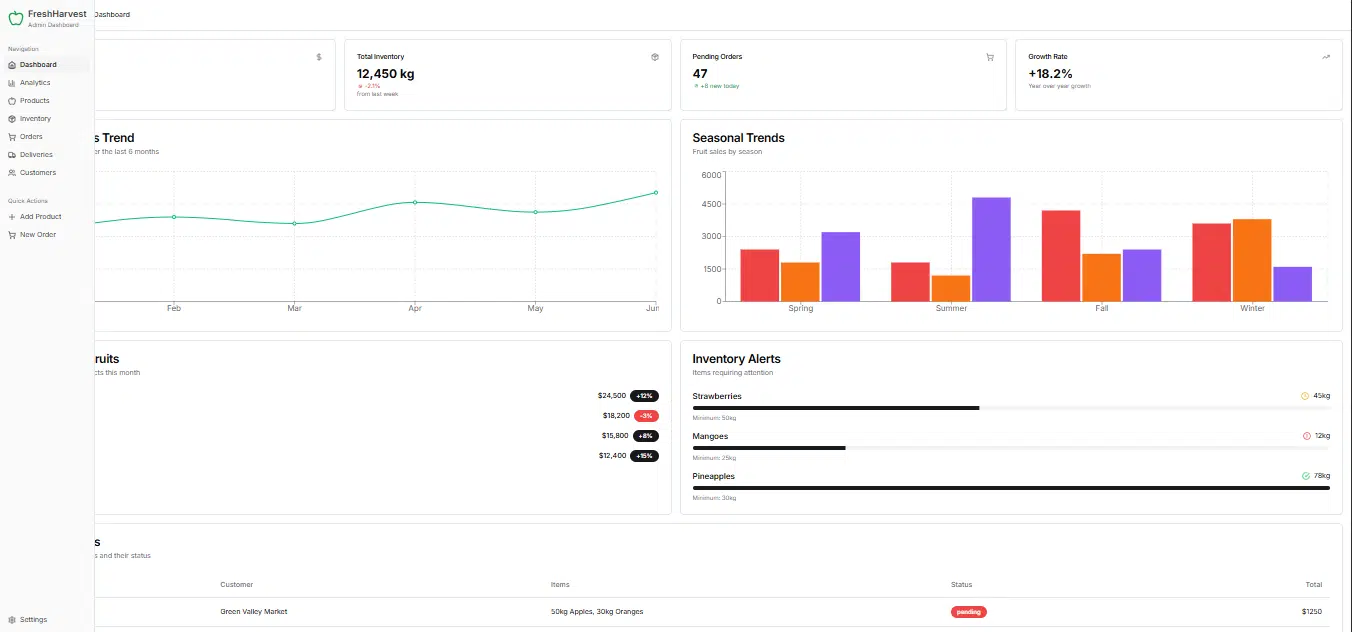
My take
I noticed all three tools generated the same name for the solution, but each had a slightly different layout and flow. Bolt was straightforward. Lovable was simple, fairly detailed, but had some non-functional buttons. v0 had a better-organized dashboard layout, but many screens were missing, and the design had noticeable misalignment issues.
Prompt 4
Build an e-commerce website for a bookstore with product listings. Each book should have a title, author name, price, and an add to cart button. Include a search bar, category filters like fiction, non-fiction, and self-help, and a featured books section at the top.
Lovable’s response
The e-book store Lovable created was simple, with different categories, book titles, authors, and prices. It included a cart page that reflected the books I added to the cart. I could enter a book title or author to search. I tried the search bar, and it filtered the books based on my search. However, there were no images for the books.
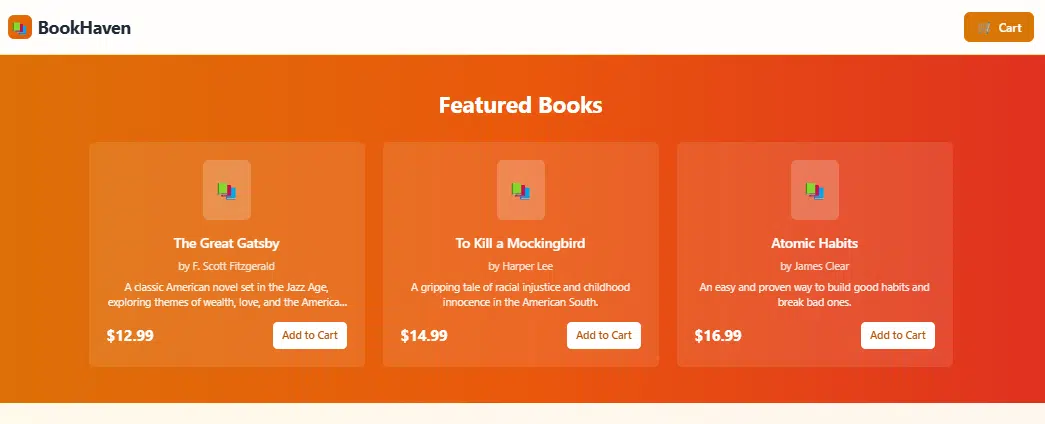
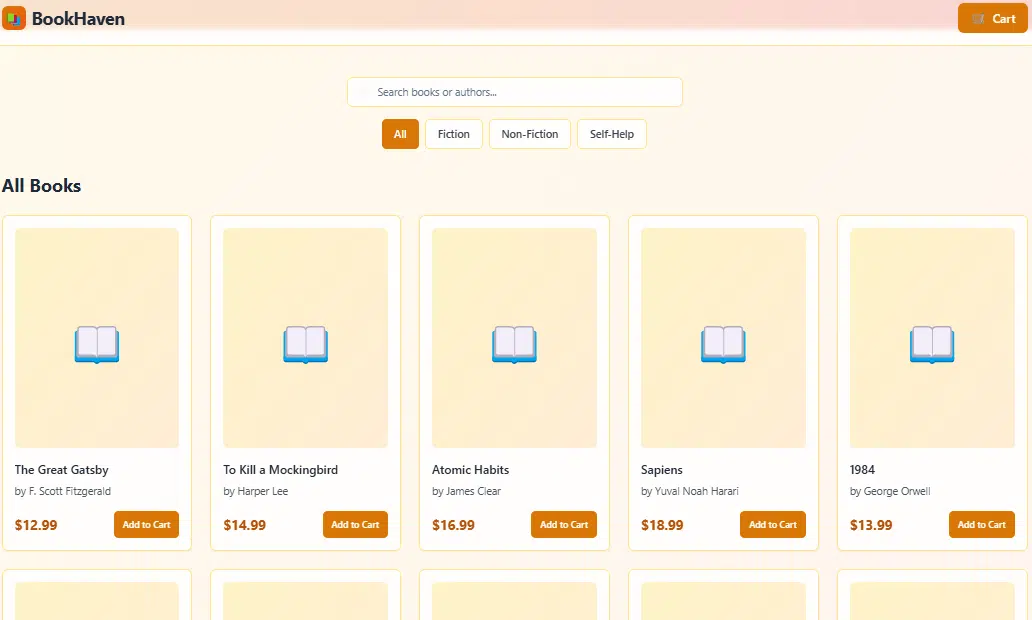
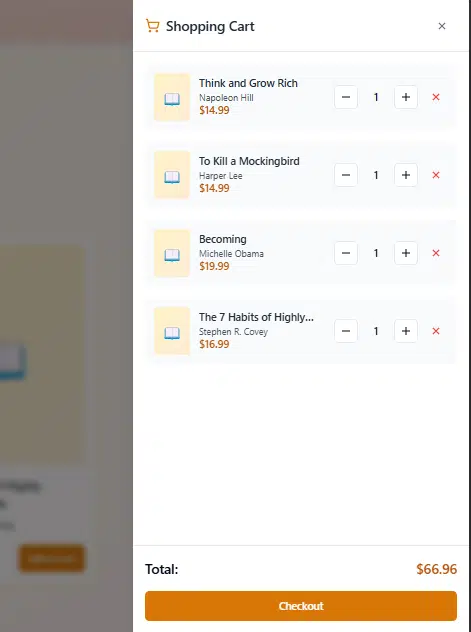
Bolt’s response
Bolt followed the prompt. It added a search feature and an add-to-cart option and included images for the books. When I tested the app, I was able to add books to the cart and filter by search or category. It also included a detailed footer. However, the cart page wasn’t functioning.
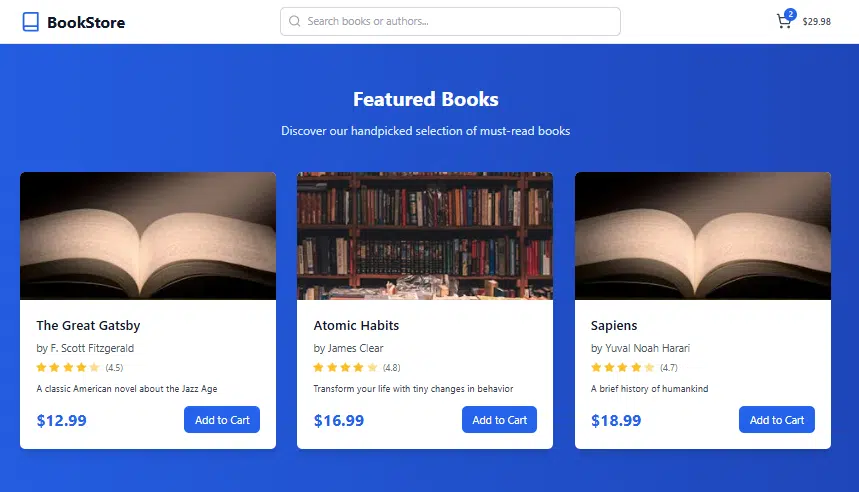
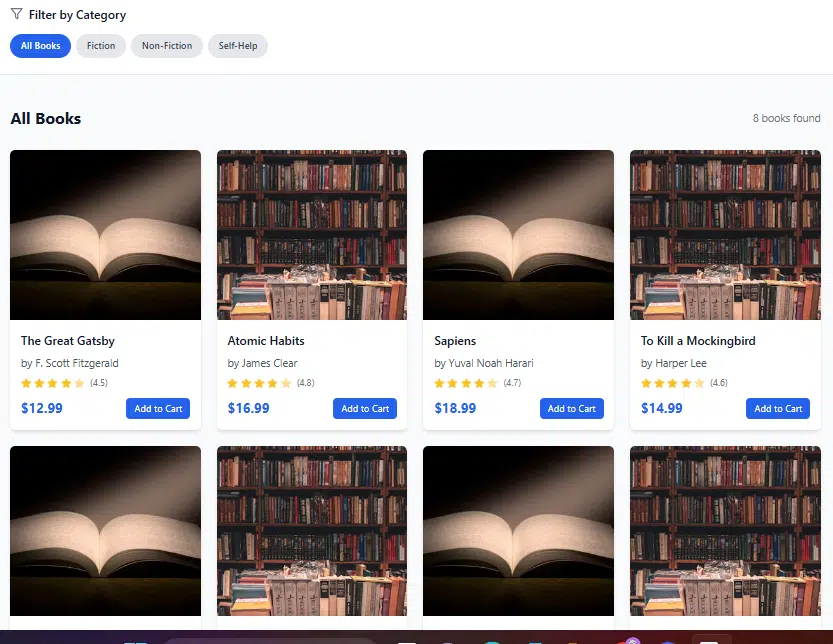
v0’s response
v0’s response was quite simple, but didn’t include images for the books. The search bar could filter results, and there were categories as requested in the prompt. I tested the app and added items to the cart. It showed in the notification, but the cart page wasn’t working.
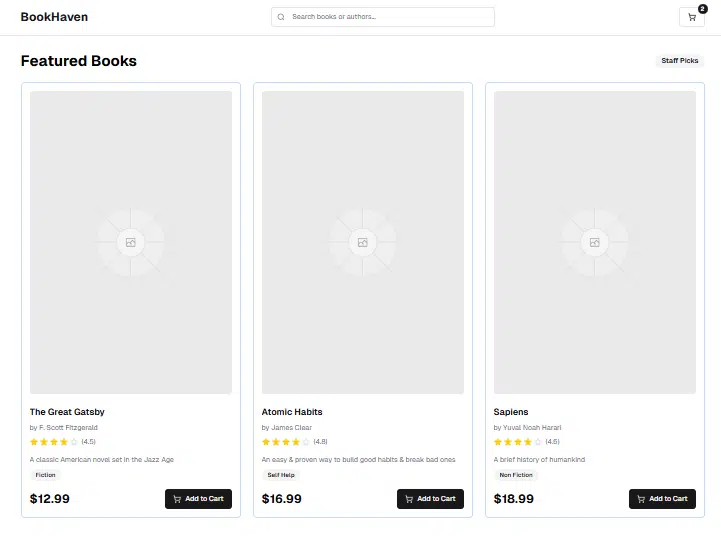
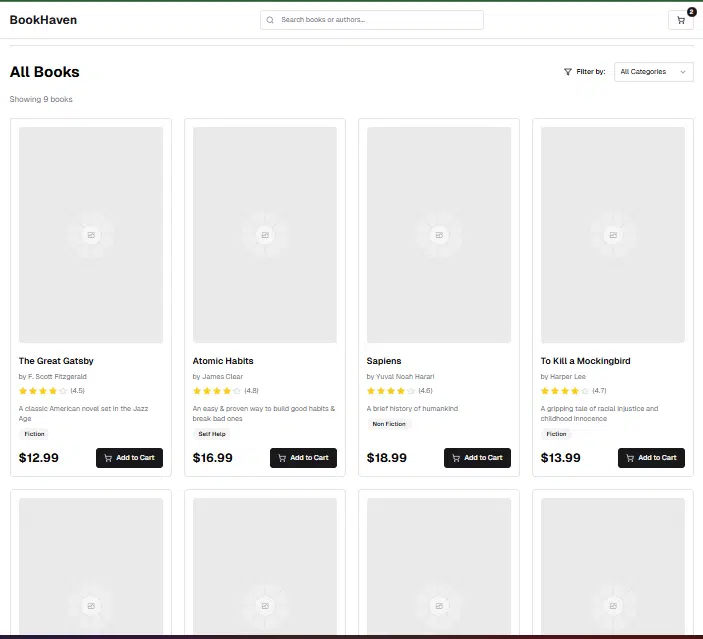
My take
Out of the three, Bolt was the only tool that displayed images in the designated image space. However, Lovable’s response was better. There were significant alignment issues in the solutions each tool produced. It seems these tools aren’t very good at handling prompts that require them to add original images of items.
Prompt 5
Recreate this design as accurately as possible using this screenshot. Keep the layout, colors, fonts, and spacing consistent with the original.
While I had already seen how the tools handle prompts, I wanted to test how well they could build a solution from a screenshot. Basically, how accurately they could replicate an existing design. So, I gave them a screenshot of Lovable’s homepage to clone and evaluated how closely they matched the original.
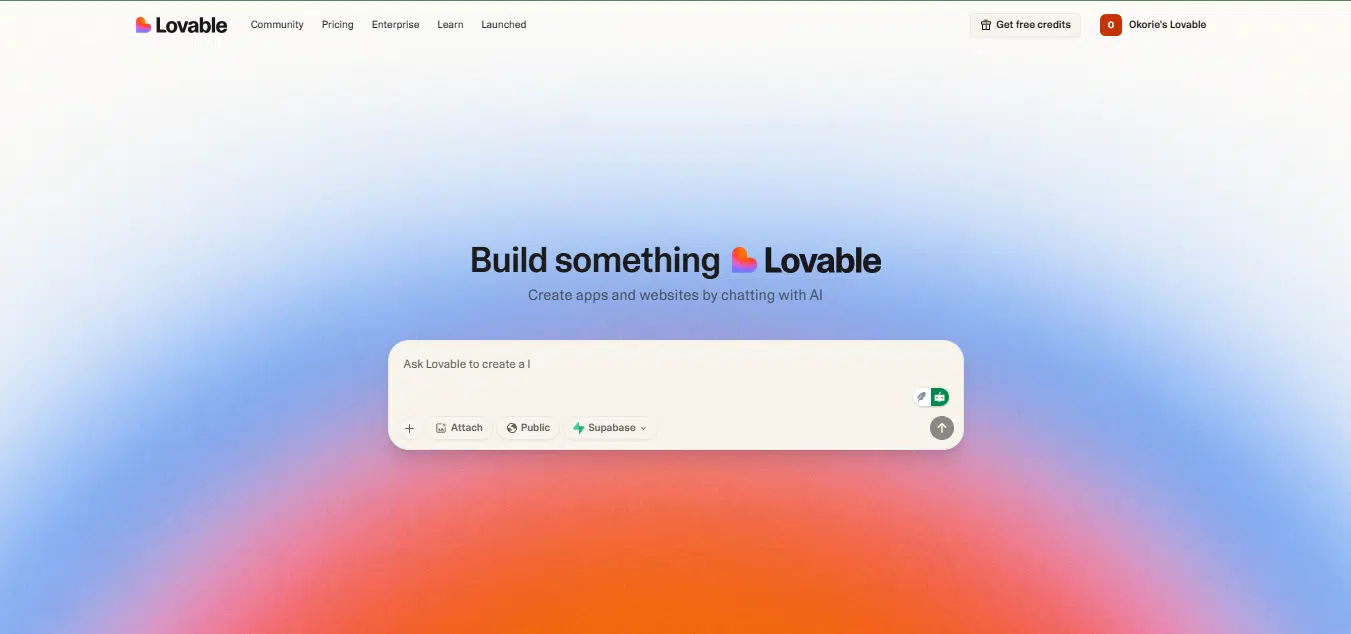
Lovable’s response
Lovable’s outcome was close to the original but not exact. It got the navigation bar right, and the text matched the original screenshot. It also recognized the logo, though not perfectly. The chat field wasn’t an exact match, but it included some of the original features, and I could type in text. However, some icons were missing.
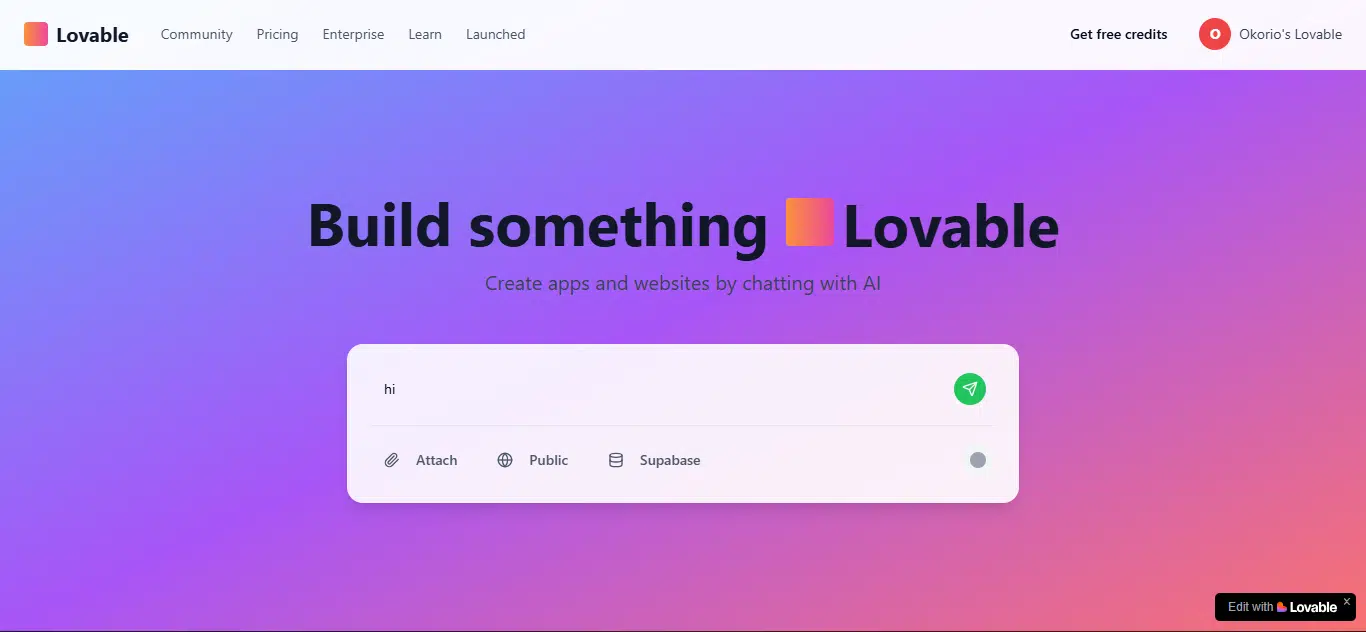
Bolt’s response
The navigation bar Bolt created was very similar to the original, including the logo. The chat field allowed me to type in prompts, and the overall features were close to the original. The text matched the original, but the logo placed between the hero text wasn’t accurate.
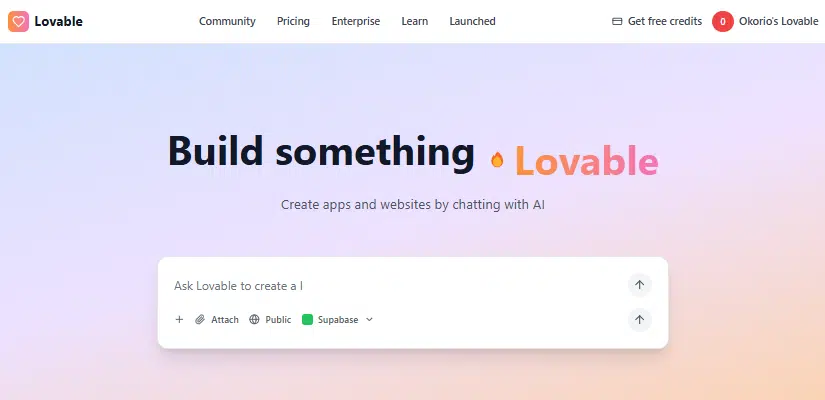
v0’s response
The navigation bar didn’t align properly, but the text matched the original. The chat field came close to the original design, and I was able to type prompts into it. It did well with the icons and color, though the alignment was a bit off for the profile.
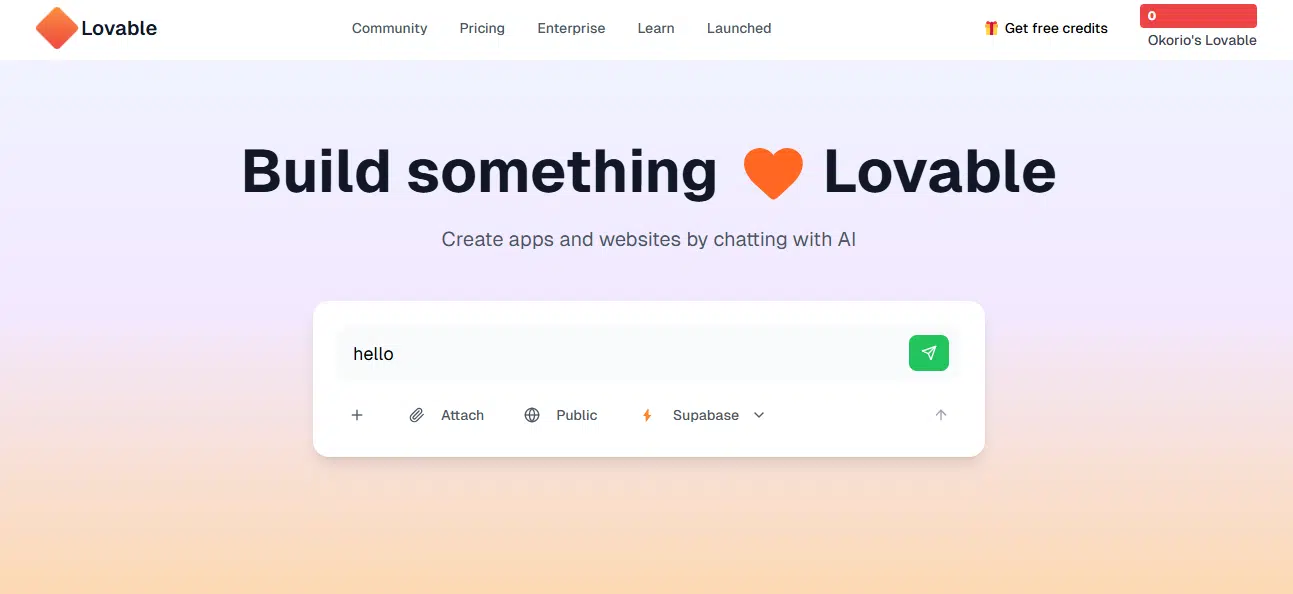
My take
None of the tools replicated the screenshot exactly, but they came close. The biggest issues were getting the logo right, matching the color scheme, and aligning elements to fit the original layout.
Lovable vs Bolt vs v0 performance at a glance
| Use cases | Lovable | Bolt | v0 |
| Pomodoro app | Lovable gave a functional Pomodoro app with all the key features and a simple layout. | Bolt met all the prompt requirements with a creative, dark-themed design that was also functional. | v0 produced a basic but functional app, though it didn’t have the session counter tab. |
| Personal budget tracker | It performed quite well for this task with tabs for transactions, motivation, and sharing. | Bolt gave a clean design with the necessary features requested in the prompt. | v0’s app for the task was basic, however functional, still having the necessary features. |
| Admin dashboard | Lovable delivered a clean admin dashboard with detailed tabs, but some buttons didn’t work. | Bolt produced a simple but functional dashboard with a working add product feature. | v0 had a clean layout with sidebars, but most screens were not built out, and the design was misaligned. |
| E-commerce website | Lovable generated a clean, functional e-book store with working search and cart features, but it lacked book images. | Bolt followed the prompt well and added images, search, and cart functions, though the cart page itself didn’t work. | v0 provided a basic version with working search and categories but no images and a functional cart page. |
| Clone a screenshot | Lovable came close to replicating the original screenshot but missed some icons and had an imperfect logo. | Bolt was close too with layout and features, but the logo between text was noticeably off. | v0 matched the text and visuals fairly well but struggled with alignment. |
Lovable vs Bolt vs v0 feature-by-feature breakdown
Lovable feature-by-feature breakdown
AI-powered development: Lovable lets you describe what you want to build, and it generates functional code using AI. You can work in chat mode for brainstorming, debugging, and planning without altering the code, or switch to edit mode for prompt-based code generation and modifications.
Design and UI features: Lovable includes a visual editor that allows you to select and edit components directly. It supports responsive design for both mobile and desktop, along with animation support to enhance user experience.
Development tools: You can save your project’s blueprint, functionality, design guidelines, and goals in the knowledge base. It also features version history to track changes over time. There is a code viewer to view and make code edits.
Integrations: Lovable integrates with tools and services like Supabase, GitHub, and other AI services. It also supports payment processing and email services.
Project management: You can manage all your projects from the project dashboard with filtering and categorization options. Use the remix feature to build on existing public projects or your own previous work. When you’re ready, you can publish and deploy or share preview links before final deployment.
Bolt feature-by-feature breakdown
AI development environment: Bolt is a browser-based tool built for full-stack web application development. It lets you interact with an AI agent in a chat-based interface to build, edit, and manage projects.
Two flexible working modes: You can choose between build mode, where you are prompted to build, and discussion mode, which helps you plan, debug, and brainstorm ideas without changing your code.
Development features: Bolt offers code management tools like diff-based editing, file targeting, and section highlighting. You can even click on UI elements in the preview to focus the AI on specific parts. There’s also built-in terminal access and error fixing. It also includes responsive preview tools to simulate different devices.
Project management: You can create, duplicate, delete, download, and upload projects. Bolt also provides tools for cleaning up unused files and optimizing token usage.
AI-powered enhancements: Bolt helps you get better results through features like prompt enhancement, reusable custom prompts, and project-level prompt templates. You can also fine-tune how Bolt behaves using project or global system prompts.
Integrations: Bolt works with third-party services, including
- Figma for importing designs
- Netlify for deployment
- Supabase for database and backend functions
- GitHub for version control
- Expo for mobile apps
- Stripe for payment processing
v0 feature-by-feature breakdown
Text prompting: v0 lets you build web apps using natural language. You can describe what you want to create, and it will generate a working UI and answer technical questions as well.
Screenshots and files: You can upload mockups, wireframes, or data files into the chat. v0 will analyze them and generate code to replicate the design or process the data.
Integration: You can connect with your Figma files and pull in visual and structural elements to transform designs into fully functioning UIs. You can also link your GitHub repositories to v0 to create projects, track changes, and stay in sync with your development workflow.
Design mode: Its design mode offers a visual, intuitive way to refine your app’s interface. You can select elements on the page, inspect properties, and make precise edits using either natural language or the built-in design panel.
Design systems: With v0, you can create a custom design system to build consistent UIs that align with your brand’s look and feel.
Deployments: v0 integrates with Vercel for deployments. You can launch your projects to production with hosting, updates, and content delivery.
Conclusion: what I learned and what I recommend
What I learned
Testing Lovable, Bolt, and v0 side by side really made me realize that not all AI-assisted programming qualifies as vibe coding. Beyond code fixes and brainstorming, I could actually prompt an AI to build a full-stack app. While each tool brings something unique to the table, a few things stood out as I tested them across different use cases using five prompts.
One of the challenges I encountered was that the generated apps often had storytelling or user flow issues. There were also common design issues, like layout misalignment and inconsistent UI elements, especially in more complex tasks.
Functionality was another challenge. Some apps had broken buttons or incomplete screens, and basic design principles weren’t always followed. When it came to images, some of the tools often didn’t add any at all.
Additionally, in many cases, the tools generated similar results, from app name to design, for the same task.
My recommendation
First, it’s important to go beyond just prompting. Most of these tools come with settings that let you tailor outputs to match your brand style, tone, and project needs. Exploring those settings before you start building can make a big difference in the final result.
Also, all three tools perform better when used to build simpler apps with clear, straightforward flows.
Meanwhile, if you’re working from a screenshot, make sure to upload a high-quality image and support it with a clear, detailed prompt.
In the end, it is still very important to have a professional review the final app if you don’t have a developer or design background. Also, you’ll want to double-check that your final app doesn’t look too much like an existing one or clash with another app on the market.
Conclusion
One of the things that became clear while testing Lovable vs Bolt vs v0 is that customizing the tool to fit your brand and prompting effectively really matters. A vague prompt leads to vague results, with basic or generic output that others can easily reproduce. But with the right approach, you’ll get more accurate and useful results. Here are a few best practices I recommend for prompting:
- Be specific about what you want
- Break down complex tasks into smaller steps
- Include technical details when needed
- Clearly state your UI/UX preferences
- Mention error handling if it’s important to your app
Also, before using any of the tools, go to the settings tab and adjust any preferences that could affect how the AI responds.
Finally, when choosing a tool to stick with, there are other things to consider. In addition to which one performs best, you should also consider practical things like how easily you can publish and deploy and how the tool manages your deployed projects.
Disclaimer!
This publication, review, or article (“Content”) is based on our independent evaluation and is subjective, reflecting our opinions, which may differ from others’ perspectives or experiences. We do not guarantee the accuracy or completeness of the Content and disclaim responsibility for any errors or omissions it may contain.
The information provided is not investment advice and should not be treated as such, as products or services may change after publication. By engaging with our Content, you acknowledge its subjective nature and agree not to hold us liable for any losses or damages arising from your reliance on the information provided.

